Related Research Articles
Pediatric nursing is part of the nursing profession, specifically revolving around the care of neonates and children up to adolescence. The word, pediatrics, comes from the Greek words 'paedia' (child) and 'iatrike' (physician). 'Paediatrics' is the British/Australian spelling, while 'pediatrics' is the American spelling.
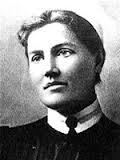
Isabel Adams Hampton Robb (1859–1910) was an American nurse theorist, author, nursing school administrator and early leader. Hampton was the first Superintendent of Nurses at the Johns Hopkins School of Nursing, wrote several influential textbooks, and helped to found the organizations that became known as the National League for Nursing, the International Council of Nurses, and the American Nurses Association. Hampton also played a large role in advancing the social status of nursing through her work in developing a curriculum of more advanced training during her time at the Johns Hopkins School of Nursing.
Home health is a nursing specialty in which nurses provide multidimensional home care to patients of all ages. Home health care is a cost efficient way to deliver quality care in the convenience of the client's home. Home health nurses create care plans to achieve goals based on the client's diagnosis. These plans can include preventive, therapeutic, and rehabilitative actions. Home health nurses also supervise certified nursing assistants. The professional nursing organization for home health nurses is the Home Healthcare Nurses Association (HHNA). Home health care is intended for clients that are well enough to be discharged home, but still require skilled nursing personnel to assess, initiate and oversee nursing interventions.

Lystra Gretter was a Canadian-American nurse who devoted her career to improving the nursing field in Michigan, promoting nursing as a profession, and writing the Nightingale Pledge, a nurses' pledge.

Mary Eliza Mahoney was the first African-American to study and work as a professionally trained nurse in the United States. In 1879, Mahoney was the first African American to graduate from an American school of nursing.

Claire Muriel Fagin FAAN was an American nurse, educator, and academic. She was an early advocate of family-centered care, with major contributions to psychiatric nursing, nursing education and geriatric nursing. Fagin was also one of the first women to serve as president of an Ivy League university.
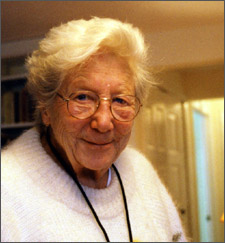
Florence Wald was an American nurse, former Dean of Yale School of Nursing, and largely credited as "the mother of the American hospice movement". She led the founding of Connecticut Hospice, the first hospice program in the United States. Late in life, Wald became interested in the provision of hospice care within prisons. In 1998, Wald was inducted into the National Women's Hall of Fame.

The New England Hospital for Women and Children was founded by Marie Zakrzewska on July 1, 1862. The Hospitals goal was to provide patients with competent female physicians, educate women in the study of medicine and train nurses to care for the sick. Until 1951 the hospital remained dedicated to women, it was then renamed to New England Hospital to include male patients. The hospital was renamed again to The Dimock Community Health Center in 1969. At present The Dimock Community Health Center provides a range of healthcare services including Adult & Pediatric Primary Care, Women's Healthcare and HIV/AIDS Specialty Care.
Ruth Watson Lubic, CNM, EdD, FAAN, FACNM, is an American nurse-midwife and applied anthropologist who pioneered the role of nurse-midwives as primary care providers for women, particularly in maternity care. Lubic is considered to be one of the leaders of the nurse-midwifery movement in the United States.
Certified in Neonatal Pediatric Transport (C-NPT) is the designation in the USA for a paramedic, physician, respiratory therapist, neonatal nurse, nurse practitioner, nurse or physician assistant who has earned certification from the National Certification Corporation in neonatal and pediatric transport. This certificate of added qualification was rolled out in 2009. National Certification Corporation utilizes applied measurement professionals to administer its tests.
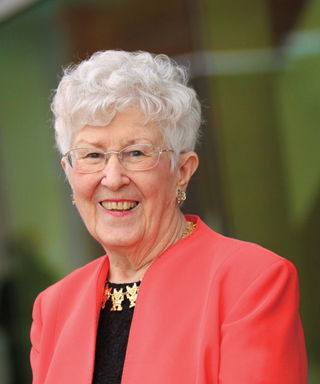
Loretta C. Ford is an American nurse and the co-founder of the first nurse practitioner program. Along with pediatrician Henry Silver, Ford started the pediatric nurse practitioner program at the University of Colorado in 1965. In 1972, Ford joined the University of Rochester as founding dean of the nursing school.
Evelyn Lundeen was an American nurse who headed the first premature nursery in the United States with Dr. Julius Hess. Outside of her work at the nursery, Lundeen traveled to other cities to teach the principles of nursing care for premature infants. With Hess, she also co-authored an early textbook on premature baby care.
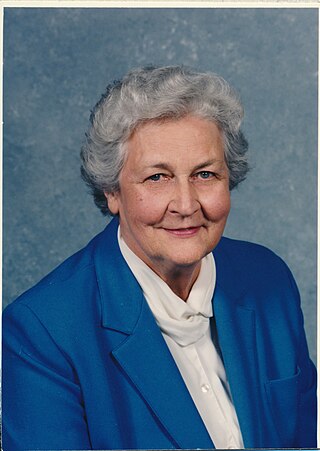
Mary Florence Woody was an American nurse, hospital administrator and university professor. She worked as a director of nursing at two large hospitals and was a nursing school dean or associate dean at Auburn University and Emory University. She was designated a Living Legend of the American Academy of Nursing.

Victoria Joyce Ely was an American nurse who served in World War I in the Army Nurse Corps and then provided nursing services in the Florida Panhandle in affiliation with the American Red Cross. To address the high infant and maternal death rates in Florida in the 1920s, she lectured and worked at the state health office. Due to her work, training improved for birth attendants and death rates dropped. After 15 years in the state's service, she opened a rural health clinic in Ruskin, Florida, providing both basic nursing services and midwife care. The facility was renamed the Joyce Ely Health Center in her honor in 1954. In 1983, she was inducted into Florida Public Health Association's Hall of Memory and in 2002 was inducted into the Florida Women's Hall of Fame.
Mary Lee Mills was an American nurse. Born into a family of eleven children, she attended the Lincoln Hospital School of Nursing and graduated in a nursing degree and became a registered nurse. After working as a midwife, she joined the United States Public Health Service (USPHS) in 1946 and served as their chief nursing officer of Liberia, working to hold some of their first campaigns in public health education. Mills later worked in Lebanon and established the country's first nursing school, and helped to combat treatable diseases. She was later assigned to South Vietnam, Cambodia and Chad to provide medical education.
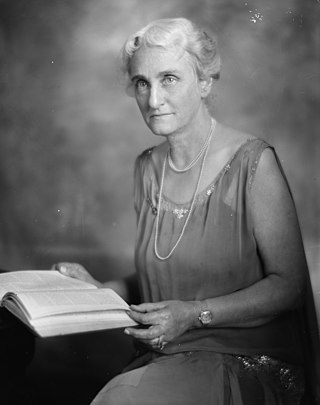
Clara Dutton Noyes was an American nurse who headed the American Red Cross department of nursing during World War I. In 1998 she was inducted into the American Nurses Association Hall of Fame.
Hendrika Bestebreurtje Cantwell is a German-born American retired physician, professor emerita of pediatrics at the University of Colorado Denver, advocate for abused and neglected children, and parenting educator. She was one of the first physicians in the United States to work for a child protection agency, serving with the Denver Department of Social Services from 1975 to 1989. Her work there brought her in contact with an estimated 30,000 cases of suspected child abuse and she testified as an expert witness in thousands of court cases. An author of peer-reviewed journal articles, book chapters, and teaching manuals on the detection and treatment of child abuse, she has also conducted workshops and training programs for professionals throughout Colorado. She was inducted into the Colorado Women's Hall of Fame in 1990.
Mary Sewall Gardner was an American nurse who is best known for her work in public health. She established the National Organization for Public Health Nursing, now called the National League of Nursing, and wrote the first public health textbook for nurses, Public Health Nursing. For her accomplishments, she was inducted into the American Nurses Association Hall of Fame in 1986.
The Platt Report, formerly known as the Welfare of Sick Children in Hospital , was a report that was the result of research into the welfare of children who were undergoing medical treatment within the UK and to make suggestions that could be passed on to the hospital authorities that would improve their welfare during hospital visits. The report was named after Sir Harry Platt, who was the President of the Royal College of Surgeons. Platt produced the report at the behest of the Ministry of Health in the UK government. The recommendations in the Platt Report, provided the means by which a child trauma ward of a hospital should be planned for children. Established on 12 June 1956, the committee that was to produce the report defined their remit as:
To make a special study of the arrangements made in hospitals for the welfare of ill children – as distinct from the medical and nursing treatment – and to make suggestions which could be passed on to hospital authorities.
Arne Beltz was an American nurse best known for her work in public health. The Arne Beltz Building, which houses the Anchorage, Alaska Department of Health and Human Services, was named in her honor in 1990. In 2013, Beltz was inducted into the Alaska Women's Hall of Fame.
References
- ↑ "ANA Hall of Fame Inductees: Florence Guinness Blake". American Nurses Association. Retrieved May 9, 2013.
- ↑ "Florence G. Blake: 1907-1983". American Association for the History of Nursing. Archived from the original on October 24, 2017. Retrieved May 9, 2013.
- 1 2 Brieske, John. "Profile of a Famous Nurse: Florence Guinness Blake". ajc.com . Retrieved May 9, 2013.
- ↑ Green, Morris (April 1954). "The Child, His Parents and the Nurse by F.G. Blake". Yale Journal of Biology and Medicine. 26 (5): 452–453. PMC 2599556 .